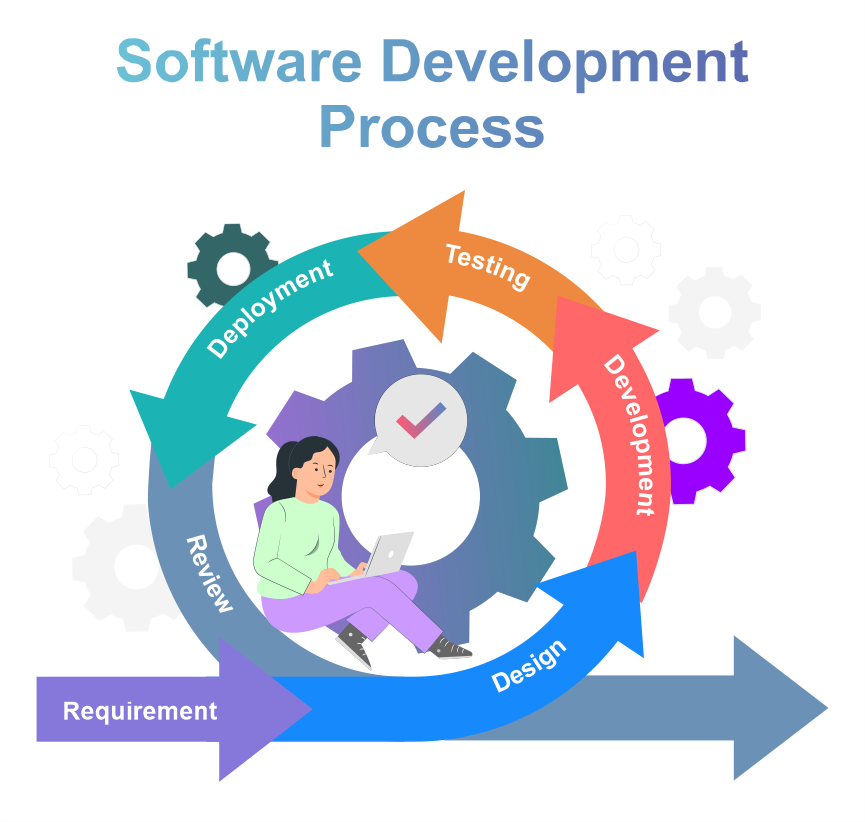Software Development using Agile Methodology
There are many methodologies in software development. Those are Waterfall, Agile, Incremental, RAD, V-model, etc. However, agile software development is the most popular and effective approach. Because Agile is a form of software development technique that anticipates the need for flexibility and applies a certain level of pragmatism to the delivery of the finished product, the primary objective of the Agile methodology is to allow speedy project completion.
Why to choose Agile software development methodology?
A software development process that is incremental and iterative is the agile model. It predetermines the number, duration, and scope of each repetition. The Agile model's primary goal is to speed up project completion. Agility is necessary for this task to be completed. By adapting the process to the project and eliminating operations that might not be necessary for a particular project, agility is accomplished. Its capacity to support teams in a changing environment while keeping a keen eye on the effective delivery of business value. The Agile team will work on different project phases, often with shorter turnaround times. A key component of the agile process is including the client in all phases of project development.
Features of Agile Methodology:
• It is an extremely practical method for developing software.
• Employing dynamic delivery and displaying features.
• Processes and tools are subordinate to people and relationships.
• As a project develops, adjustments can be accommodated by an agile team.
• Agile has been modified and adapted to meet various business sizes and types.
• Total quality service through quick software delivery.
• Gives developers flexibility and is simple to manage.
• Possibility of simultaneous delivery and development within a recognizable planned environment.
Process of Agile Software Development:

Requirements: You need to specify the requirements during this step of the agile methodology. Explaining commercial potential and scheduling the time and resources required to complete the project are important. The business owner assesses the risks and prioritizes the numerous tasks according to their value to the company at the same time.
Design of requirement: Once the project has been defined, collaborate with stakeholders to define the requirements To demonstrate how new features function and how they will be integrated with your existing model, use a user flow diagram or a high-level UML diagram. The following steps involve developing a user interface simulation and starting the project architecture.
Development/Iteration: After defining the requirements, the work can start. The project, which aspires to release a functional product, is started by designers and developers. The product will go through several rounds of improvement using only basic features.
Testing: The Quality Assurance team evaluates the functionality of the product and hunts for bugs at this phase. The team must run a series of tests to ensure that the program is fully functional. The developers will right away repair any potential flaws or shortcomings.
Deployment: The device has undergone thorough testing with impressive outcomes, and is now ready for launch. Users can now access the software because it has reached this point in its deployment.
Review: The team receives feedback on the product during this phase, and using that feedback, they strive to fix any flaws. Teams may resolve issues more readily in the future as a result of the reviewing phase since they now have a better understanding of their workflow and what works and what doesn't.
Different Agile Testing Methods:
Agile software development involves different testing methods. The steps of software development are defined differently by each method. Agile task-splitting methods do not primarily involve long-term planning. Instead, they divide work into smaller iterations or pieces.
Scrum: The primary focus of this agile methodology is task management in collaborative development environments. With the help of this system, challenging projects can be taken on and finished successfully. It encourages collaboration among small groups and supports giving the development team more control. By developing a product backlog in Scrum, product owners can work with their team to specify and rank system functionality.
Crystal: This strategy is the most adaptable and portable. One of the easiest and most adaptable methods for developing software, taking into account the particularities of each project, is the use of the Crystal process. Projects with a high level of uncertainty and regularly changing requirements benefit especially from this methodology.
Lean: It seeks to streamline the process by identifying and eliminating stages and activities that are not necessary. It is based on the ideas of lean manufacturing. It is flexible and always evolving; it does not have specific rules or guidelines. The lean methodology suggests that software development is happening more quickly and for less money.
Extreme Programming: When client needs or objectives are changing, Extreme Programming is a helpful agile methodology. To accomplish these objectives, it makes use of particular techniques like test-driven development, continuous integration, and pair programming. It promotes greater collaboration among team members, rapid feedback cycles, ongoing planning and testing, and increased customer involvement.
Feature Driven Development: To achieve this objective, this strategy employs a number of methods, including feature list creation, model evaluations, and the application of a design-by-feature methodology. It is broken down into a number of quick work steps that must be finished separately for each feature. Feature-driven development's main objective is to deliver clients' software that is regularly updated and functional.
Conclusion:
Agile methodology enables firms to quickly react to changing market needs. Agile has been adjusted and changed to accommodate different sizes and types of businesses. Here, you need a qualified team that can offer you top-notch services if you want to produce the greatest software using an agile methodology. Contact Career IT and Business Solutions Inc., an Edmonton, Canada-based custom software development company. To keep the system functional and fix any new flaws, its software development staff provides on-going support.
